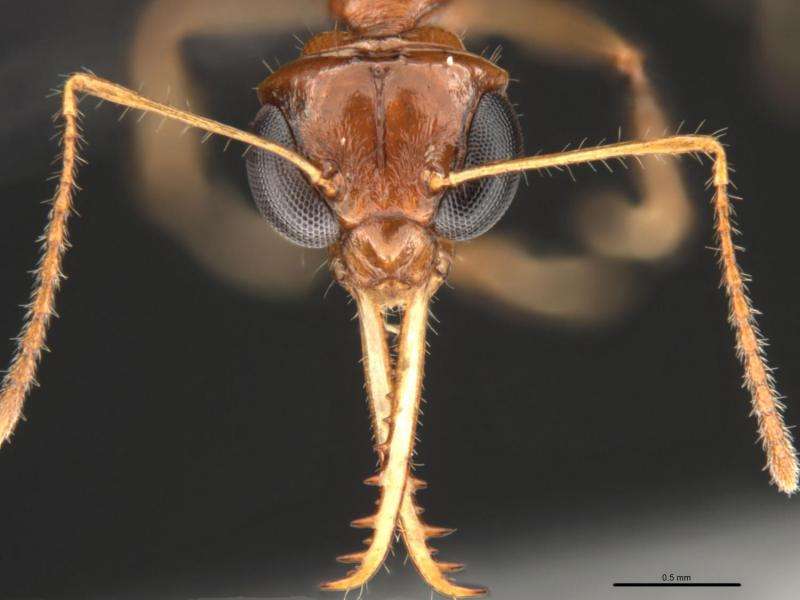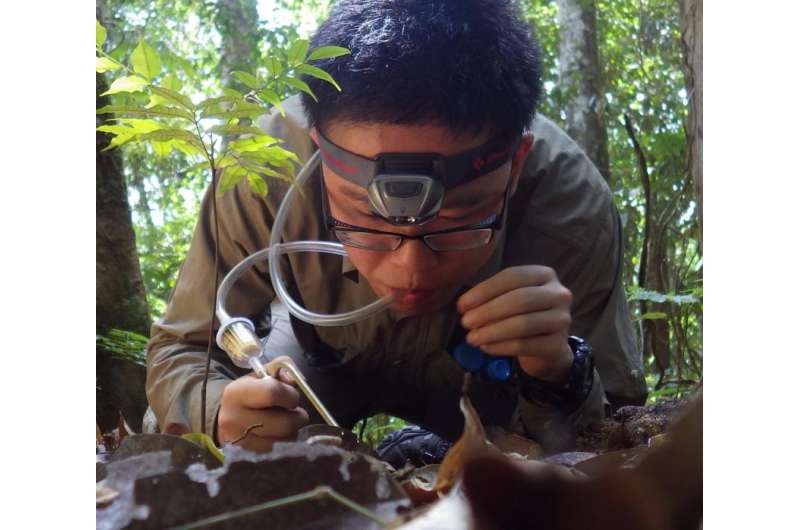Unravelling the costs of rubber agriculture on biodiversity

Rubber plantations are a rapidly spreading agroecosystem in Southeast Asia and they are likely to have profound impacts on biodiversity due to the disruption of the natural landscape. Therefore, researchers at Okinawa Institute of Science and Technology Graduate University (OIST) studied ant biodiversity changes in Xishuangbanna, China after a forest was converted into a rubber plantation as an indicator for other invertebrates. The researchers found a sharp decline in the overall biodiversity of the ants in the rubber plantation, as reported in a new paper published in Ecological Monographs.
"We want to know what the responses of all different organisms are to conversion from forest to rubber plantation, but sampling everything isn't feasible," Prof. Evan Economo, leader of the research team and the OIST Biodiversity and Biocomplexity Unit said. "Ants are a good surrogate for other invertebrates and are very functionally important. They perform many roles in the ecosystem, such as decomposition and seed dispersal, and they are dominant everywhere."
In order to see the impacts on biodiversity, the researchers collected 186 ant species from 11 sites on the rubber plantation in China, and 24 sites from the surrounding forest area. Then, they sorted the ants by species and measured their functional traits. Functional traits are traits that associate with how the ant is interacting with the ecosystem where it lives. These are characteristics like body size, eye dimensions, and leg length. In addition, they also captured the phylogenetic diversity of the ants, which looks at how related the different species are on the phylogenetic tree. The more of the tree that is represented, the more phylogenetic diversity exists.
"We looked at biodiversity in different dimensions," Economo said. "We wanted to pick apart what was happening to biodiversity in these different dimensions as the land was converted to rubber plantations."

The researchers found a striking decrease in ant biodiversity at the rubber plantation in not only species richness – the number of species – but also in the ants' functional and phylogenetic diversity. In fact, functional diversity declined more than expected.
Not only that, the drop in ant biodiversity was not random because the data show that only a subsection of the forest species with certain subset of functional traits are able to colonize and survive in the rubber plantation.
"The rubber plantation acts as an ecological filter to select a certain subsets of species," Cong Liu, OIST Ph.D. student and first author said. "This contributes to the more than expected functional biodiversity loss seen in the ant communities."
The loss in number of ant species combined with the reduction of their functional diversity could mean that this may later have effects on other insect groups, as well as on ecosystem processes.
"We need to take into consideration the different layers of biodiversity when studying the effects that humans have on the earth," Economo said.
More information: Cong Liu et al. Reorganization of taxonomic, functional, and phylogenetic ant biodiversity after conversion to rubber plantation, Ecological Monographs (2016). DOI: 10.1890/15-1464.1
Provided by Okinawa Institute of Science and Technology

















